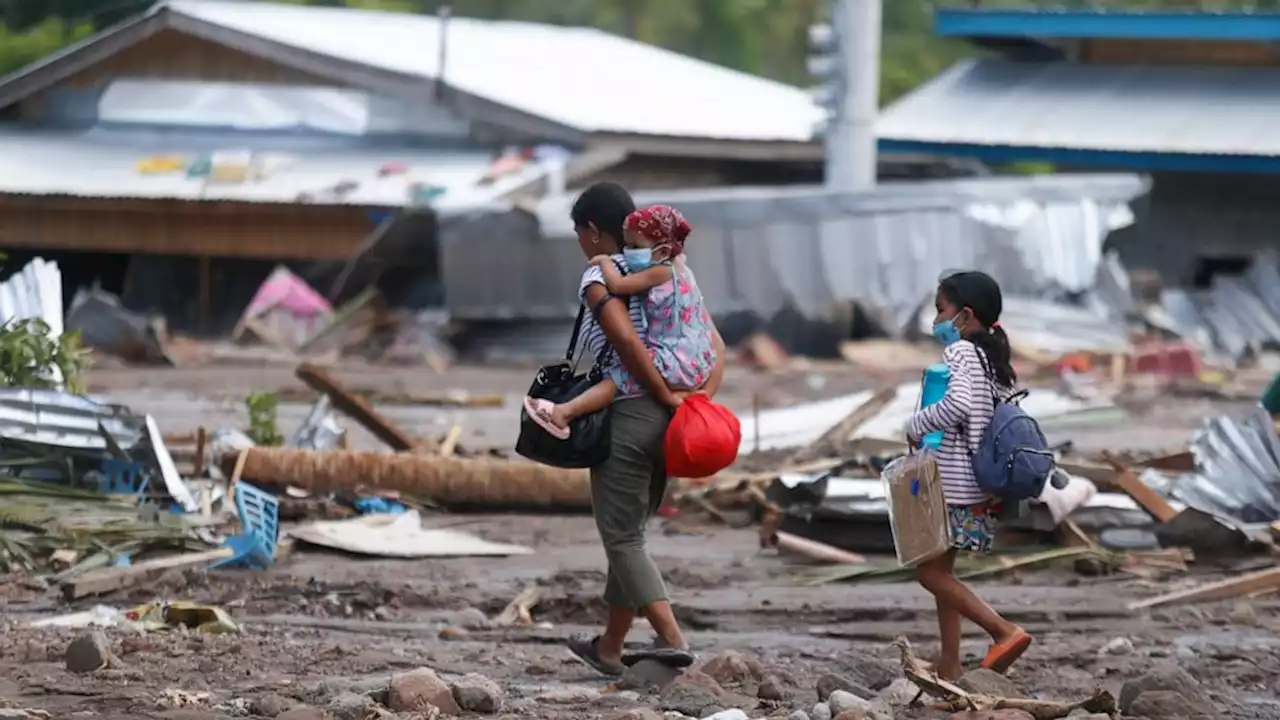Nearly 100 people have died in one of the most destructive storms to hit the Philippines this year with dozens more feared missing in a mudslide-hit mountainside village, officials say.
Residents walk beside remains of damaged homes at Maguindanao's Datu Odin Sinsuat town, southern Philippines on Sunday Oct. 30, 2022. Victims of a huge mudslide set off by Tropical Storm Nalgae in a coastal Philippine village that had once been devastated by a killer tsunami mistakenly thought a tidal wave was coming and ran to higher ground toward a mountain and were buried alive, an official said Sunday.
The government’s main disaster-response agency also reported 69 people were injured in the onslaught and at least 63 others remain missing. The catastrophe in Kusiong, populated mostly by the Teduray ethnic minority group, was particularly tragic because its more than 2,000 villagers have carried out disaster-preparedness drills every year for decades to brace for a tsunami because of a deadly history. But they were not as prepared for the dangers that could come from Mount Minandar, where their village lies at the foothills, Sinarimbo said.
In August 1976, an 8.1-magnitude earthquake and a tsunami in the Moro Gulf that struck around midnight left thousands of people dead and devastated coastal provinces in one of the deadliest natural disasters in Philippine history. The stormy weather in a large swath of the country hindered transportation as millions of Filipinos planned to travel over a long weekend for visits to relatives’ tombs and for family reunions on All Saints’ Day in the largely Roman Catholic nation.
